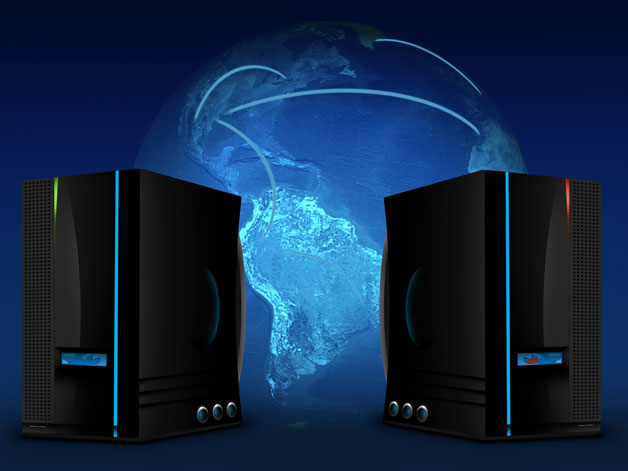The Raritan Blog
Home » Raritan Blog » Edge Data Centers: The Impact
Edge Data Centers: The Impact
Rick Gonedes
July 11, 2017

At their core (no pun intended), edge data centers are a natural response to both the increased demand of things like Internet-based content and the trend of moving more networks directly into the cloud. What started as a simple conceptual response to bandwidth-intensive ideas like the Internet of Things (IoT) has quickly turned into something few could have predicted. Though edge data centers began life in a form that many described as "glorified content delivery networks", they definitely didn't stay that way for very long.
The new, edge-driven world of data centers that we're now living in actually has a number of important implications that you need to be aware of moving forward.
What Are Edge Data Centers?
According to the experts at NetworkWorld.com, a data center must meet seven core criteria to even be considered an edge data center in the first place. These include:
- The location must serve more than 50% of broadband requirements locally.
- It must also be responsible for handling 75% of local Internet usage.
- It must be serving a range of high-bandwidth applications where distance is a major factor.
- It must yield measurable cost and performance benefits over its core counterparts.
- It must be responsible for delivering a rich, media-driven experience.
- It must offer improved security, particularly in terms of isolating a network from DDoS and similar types of attacks.
- It must be a Tier-3, N+1 data center. This means that it guarantees a 99.982% uptime rate.
Unless all of the previous criteria are met, a data center is not an "edge" data center at all - it just happens to be a very similar data center that happens to exist in a tier-2 market.
The Impact and Implications of a Life on the Edge
Mentioning the requirements of calling a data center an "edge" data center in the first place is important, as it contextualizes the many different benefits that these types of operations bring to the table and why the impact of their popularity is so great.
If a computer user is simply browsing their favorite website on the Internet, it's nearly impossible to tell whether you're "near" or "far" from the edge. When you begin to think about more important objectives, like monitoring traffic in real-time for the purposes of providing actionable safety information to drivers, suddenly every second counts. Latency becomes a big factor, not only because high latency will ultimately degrade your ability to do your job by harming performance but it will also make it more difficult to maintain a secure environment at the same time.
When you consider the host of different applications that require low latency in the modern era, from online gaming to cloud-based enterprise applications to streaming video and more - you begin to get an idea of just how important edge data centers have become.
This also brings the discussion towards the aforementioned Internet of Things, where literally billions of devices are all creating, storing and sharing information with one another in real-time. Not only is the bandwidth requirement of the IoT massive, but issues like performance and security are once again major factors. If every "smart" item in your home is connected together, your provider's network got a DDoS attack at a centralized point it would essentially take your whole world offline. Likewise, these devices are intended to come together to form a seamless experience - unacceptable network latency could make that impossible.
These ideas are fundamental to the modern business that edge data centers have even impacted the direction the entire industry is headed in. Essential data is already being made available at the "near edge" in large data centers, but trends like the IoT will only increase the need for micro data centers to exist alongside their larger, centralized counterparts sooner rather than later.
In addition to giving us better services with better performance at better prices, it's easy to see the world where in ten years edge data centers are no longer a niche. They become the "new norm," driving innovation and business transformation for years to come. Now that you are equipped and more knowledgeable about the edge, why stop there? For more information about data center management to better accomplish your goals, visit our blogs for more information to achieve your objectives.
Other Blog Posts
- The Rapid Growth of AI and the Use of Raritan PDUs to Meet Higher Power Demands
- Posted on October 11, 2023
- Data Center Report Fewer Outages, But Downtime Still Costly
- Posted on September 20, 2023
- Survey: Energy Usage and Staffing Shortages Challenge Data Centers
- Posted on September 20, 2023
- Raritan Secure Switch: Secure NIAP 4.0 Compliant Desktop KVM
- Posted on September 20, 2023
- The Midwest is a Hot Market for Data Centers: How the New Generation of Intelligent Rack PDUs Can Save Cloud Giants Uptime and Money
- Posted on September 7, 2023
Subscribe
Upcoming Events
- Advancing Data Center Construction West 2024
- May 6 – 8 • Salt Lake City, UT
- Net Zero Data Center
- May 16 – 17 • Dallas, TX
- 7x24 Exchange Spring
- June 9th • JW Marriott Orlando Grande Lakes
Latest Raritan News
- Legrand Certifications and Process Controls Provide Confidence in Information Security for Network-Connected Devices in Data-Related Applications
- Posted on April 1, 2024
- Legrand Releases Version 4.0 of Raritan’s Industry-Leading Secure KVM Switches, Raising Bar for Secure Desktop Access
- Posted on July 31, 2023
- Legrand Revitalizes Data Center Sector with Two Revolutionary Intelligent Rack PDUs
- Posted on May 1, 2023
- Raritan Reveals The MasterConsole® Digital Dual KVM Switch
- Posted on February 18, 2021
- Legrand Data, Power and Control Division Announced as Finalist in Six Categories at DCS Awards 2020
- Posted on November 9, 2020